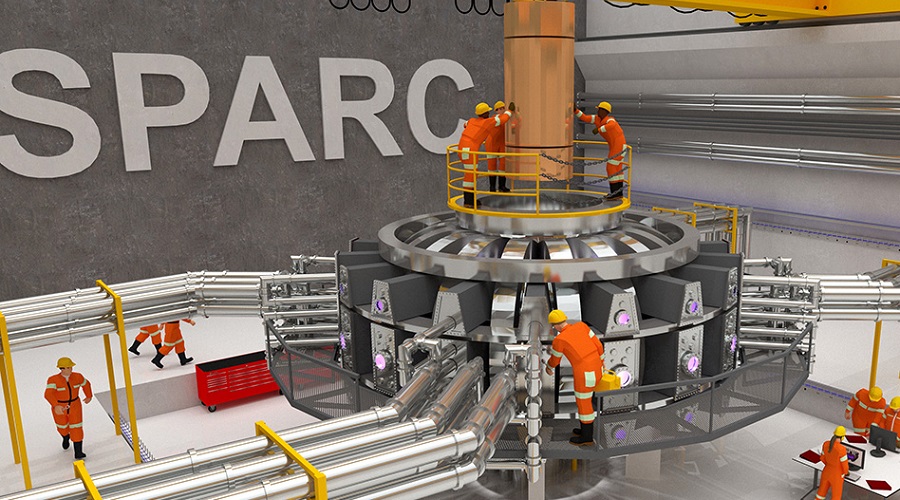
The Massachusetts Institute of Technology and Commonwealth Fusion Systems have partnered to advance a new generation of fusion experiments and power plants based on advances in high-temperature superconductors, which could help achieve the long-sought goal of producing fusion power.
In a press release, the scientists and funders involved in the project define fusion power as a potentially “inexhaustible and zero-carbon source of energy.”
Fusion is the process that fuels the sun and the stars. It involves light elements, such as hydrogen, smashing together to form heavier elements, such as helium — and the release of prodigious amounts of energy while these collisions occur.
The process produces net energy only at extreme temperatures of hundreds of millions of degrees Celsius, too hot for any solid material to withstand. According to the MIT, to get around that, fusion researchers use magnetic fields to hold in place hot plasma and to keep it from coming into contact with any part of the donut-shaped chamber where it is placed.
Based on this, now the scientists want to develop the world’s most powerful large-bore superconducting electromagnets, which are the key components that will enable construction of a much more compact version of a fusion device known as a tokamak. The magnets, supported by a superconducting material that has only recently become available commercially, will produce a magnetic field four times as strong as that employed in any existing fusion experiment, enabling a more than tenfold increase in the power produced by a tokamak of a given size. The idea is to make it capable of generating 100 million watts of fusion power.
While it will not turn that heat into electricity, it will produce, in pulses of about 10 seconds, as much power as is used by a small city. That output would be more than twice the power used to heat the plasma, which would lead to positive net energy from fusion.
If the plan works out, it would establish that a new power plant of about twice the diameter of this prototype would be capable of producing commercially viable net power output and could go ahead toward final design and construction. Such a plant would become the world’s first true fusion power plant, with a capacity of 200 MW of electricity, comparable to that of most modern commercial electric power plants.
“If widely disseminated, such fusion power plants could meet a substantial fraction of the world’s growing energy needs while drastically curbing the greenhouse gas emissions that are causing global climate change,” the media statement reads.
Comments
patentbs
A worthy goal. Fusion has always been the ‘promise’. But only further development in materials and technology will make it viable. I have faith (long term faith).